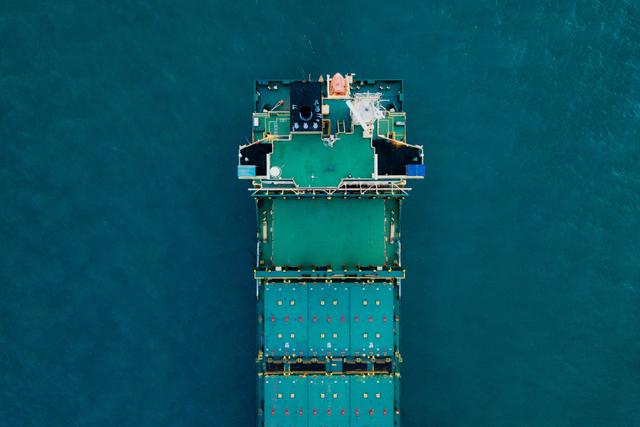India’s Top Inland Container Depots(ICDs) & Route Hacks to Save Time and Cost
Discover how India’s top Inland Container Depots (ICDs) can help exporters avoid port congestion and reduce haulage costs. Learn smart routi...
This Week in Ocean Freight. Major shipping companies outline plans for meeting the IMO's 2020 low-sulfur mandate

Another busy week in Rotterdam. Looking at my full schedule I was thinking about how digitalising my life has helped me save so much time. I order my groceries online and they get delivered right to my kitchen, which saves a hours a week. Same goes for getting somebody a present (not for Christmas yet). My favorite e-tailer has an app for that. A few clicks and everything is arranged. And at work I’m trying to do the same for importers and exporters all over Europe. Letting them book container shipments with just a few clicks.
Talking about saving time: let’s go straight to the logistics news highlights for this week
The attention for sustainability issues is still on the rise, which is a good thing. We only have one planet, so we should use it wisely. Both ports and shipping companies have their eye on the green ball, but not all measures taken are favorable for shippers. I do however fully agree with the first concrete action of the World Ports Climate Action Program mentioned in the first article below. Increasing the efficiency of using digital tools is just what we are doing here at Cogoport.
“It is important to note that Los Angeles/Long Beach joined six other international ocean cargo gateways in the initiative called the World Ports Climate Action Program.
This represents the creation of In their release today, the seven ports have agreed to focus on five concrete actions:
1. Increase efficiency of supply chains using digital tools. 2. …”
→International ports inspiring deeper commitment in support of the Paris Agreement
“The International Maritime Organization, the United Nations agency that regulates global shipping, will require that ships in international waters emit no more than 0.5% sulfur by 2020.
The mandate is poised to disrupt the maritime industry, which has long relied on cheap high-sulfur bunker fuel with sulfur content around 3.5%.
The major lines are now facing hard decisions on how to meet the mandate.”
→Major shipping companies outline plans for meeting the IMO's 2020 low-sulfur mandate
This does have an effect on shippers, as carriers are adjusting fuel surcharge, for example
“Carriers impose [fuel surcharges] unilaterally without any negotiation with shippers and ignore a market approach to the global problem.
The future of higher-cost low-sulphur is a multi-billion, complex issue in international maritime transport and it can only be addressed and understood by shippers if carriers provide cost transparency on their fuel spend and the cost impact of the new IMO low-sulphur regulation”
→New ocean cargo carrier surcharges in January have supply chain managers concerned
“The containership industry may finally end a lost decade of investment returns as demand accelerates and ocean carriers keep a lid on supply, according to one market expert.
With the exception of 2010, operating profit margins have averaged between 3% and 4% over that period.
But the benchmark is an operating margin of 10%, which is closer to the industry’s capital cost... The spread between what liner operators earned and what it cost them to deploy ships accrued to the customers who received a service at a rate below what it cost to provide..."
Christmas is Coming
Preparations for Christmas are in full swing though for a lot of people working in logistics. One of the two articles I read about the upcoming holiday period talks about how major logistics providers have started hiring additional staff already. It also gives tips on how companies can prepare their supply chains for the holiday season. Most of these can be solved right on the Cogoport platform: “Give customers visibility to their orders” and “Prepare to use the spot market to make up for excess demand not covered by carriers” and “Get more rates by connecting with more carriers”. Just saying… ;-)
“The time for holiday hiring has arrived, with three of the biggest households in the freight transportation and logistics sectors-UPS, FedEx, and XPO Logistics, each making announcements to that effect over the last few days.”
→It’s Almost October and the Holiday Hiring Has Arrived for the Transportation & Logistics Sector
“A container supply chain would commonly require around a week for a box to be moved from arrival port to an inland distribution centre where it is unstuffed and the goods forwarded. Given the four-to-five week sailing time from Asia to North Europe, the last boat from China is effectively the end of October.”
→When should importers start shopping for Christmas shopping?
Last week I wrote about autonomous container ships, and the article below made me think of that immediately. I’m guessing there is a good chance autonomous ships are designed with seagulls in mind…
“Birds, too, can confound computers. In Boston, NuTonomy had to reprogram its cars to disperse stubborn seagulls. ”For the local breed of unflappable seagulls—which can stop autonomous cars by simply standing on the street, unbothered by NuTonomy’s quiet electric cars—engineers programmed the machines to creep forward slightly to startle the birds,” reports Bloomberg.”
→All the things that still baffle self-driving cars, starting with seagull